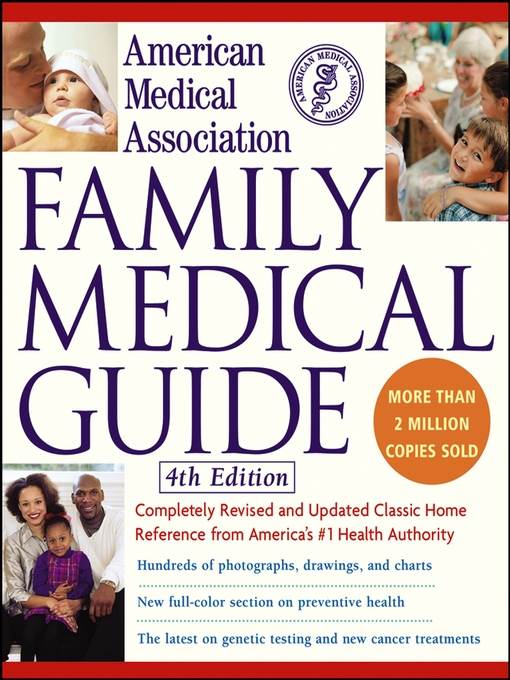
American Medical Association Family Medical Guide
فرمت کتاب
ebook
تاریخ انتشار
2011
شابک
9781118039748
کتاب های مرتبط
- اطلاعات
- نقد و بررسی
- دیدگاه کاربران
نقد و بررسی

September 27, 2004
Medical "bibles" go out of date quickly. Diseases don't change, but our understanding of them does. So a new volume of a standard guide for the nonphysician is certainly welcome. What's perhaps most gratifying about this updated reference is that, based on new understanding of how much regular people can do to keep body and mind whole, it advises readers to take an active approach. For those already suffering a particular medical condition—and the book covers a great deal of territory, from blood to heart to brain diseases—this volume will serve as a source of real understanding. Armed with the basics, patients may be less embarrassed to ask more of their physicians or surgeons. The authors acknowledge the benefits of yoga and meditation (which they call the relaxation response) and offer a rundown of homeopathic medicine. Other new additions include expanded coverage of genetic testing, learning disabilities, ADD and stem cell transplants. The authors discuss sexually transmitted diseases, sexual orientation, contraception and abortion with forthrightness. Self-help charts that will supposedly lead readers from symptom to diagnosis are a kind of maze game and will keep hypochondriacs busy for hours. This is a well-organized volume, considering the amount of information it covers. By educating patients, the book may be as much a help to physicians as it is to their charges. Photos, illus.

October 1, 2004
Much has changed since the third edition of this family guide was published ten years ago; this new volume is 50 percent longer, and 90 percent of its material is new. Overseen by an editorial board of physicians, dentists, fitness specialists, and therapists, the guide is divided into six sections, beginning with an all-new, full-color chapter on current health issues such as stress, weight control, genetics, and terrorism. Part 2, which deals with preventative medicine, includes a 32-page section of color plates illustrating anatomy, common medical conditions, and diagnostic imaging. Part 3 covers emergency situations and home care giving issues. Part 4 features a series of symptom flowcharts that help readers decide when to call a physician, go to the emergency room, or care for a problem at home. In Part 5, there are new chapters on children's health, adolescent health, sexuality, infertility, pregnancy and childbirth, and death and dying. Part 6, the bulk of the book, is devoted to diseases and conditions. Arranged by organ systems, the guide provides the names of the disease, symptoms, diagnosis, treatment options, and prevention. New to this edition is information about dental health and cosmetic surgery. Besides a general glossary, there is a glossary of the most frequently prescribed classes of drugs. Unfortunately, the list of drugs by generic name lacks cross references to brand names, which may be confusing for users unfamiliar with the generic name of the drug that they have been prescribed. Bottom Line While a very nice update, this fourth edition covers much of the same material as last year's The American Medical Association Complete Medical Encyclopedia, albeit in a more concise form. Libraries already owning that work do not need to purchase this one unless they want a circulating copy.--Barbara M. Bibel, Oakland P.L.
Copyright 2004 Library Journal, LLC Used with permission.

























دیدگاه کاربران